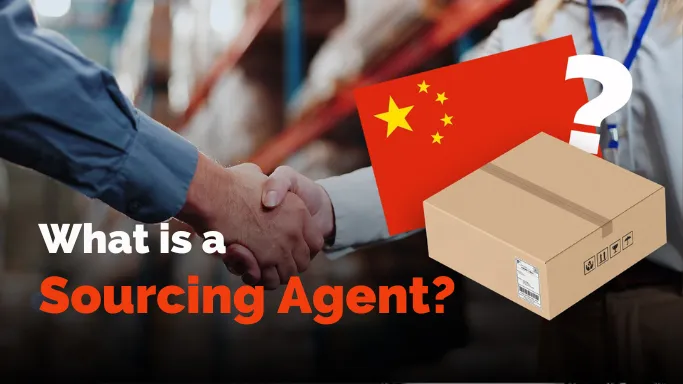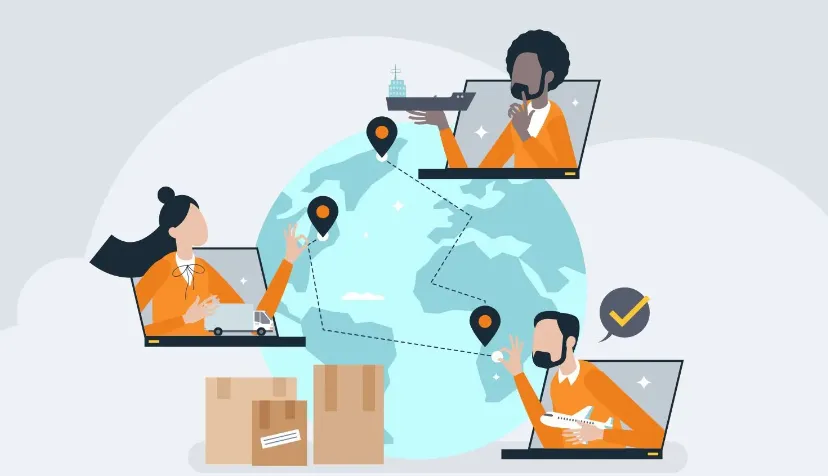What Is a Third-Party Sourcing Agent? — Roles, Risks, How to Hire, and a Practical Sustainable Procurement Playbook

Here’s the thing — a sourcing agent isn’t a mystery. They’re the on-the-ground partner who finds suppliers, negotiates terms, runs quality checks, and helps move production forward when you can’t—or don’t want to—do every step yourself. But using an agent well takes structure. In short: this guide walks you from “what is it?” to running a 30–90 day pilot, writing SLAs, measuring performance, and making agents actually deliver on ESG goals.
Let’s break it down.

A third-party sourcing agent is a specialist (or firm) that sources suppliers, vets factories, negotiates contracts, coordinates samples and inspections, and hands off orders to logistics—on behalf of a buyer. Use them when you need local knowledge, faster supplier discovery, or tighter quality control overseas. Don’t use one without clear SLAs, pilot validation, and contract protections (IP, audit rights, transparent fees).
Who hires sourcing agents — buyer profiles & decision matrix
What services good agents actually deliver (process map)
Benefits vs. risks — red flags and vetting questions
How to vet and shortlist agents — RFQ + interview checklist (copy/paste ready)
Pilot program: 30–90 day test plan with acceptance criteria
Contracts, fees, payment models & sample clauses you can reuse
KPI pack & supplier scorecard (weights and formulas)
Sustainable procurement through agents — operational checklist + ESG KPIs
Pricing transparency: realistic fee examples and when to choose each model
Regional playbooks: China, Vietnam, Mexico (MOQs, lead times, QC notes)
Legal & payment safety — due diligence, IP, escrow, anti-bribery checks
FAQs (short answers)
Next steps — templates and a quick action checklist

In practice, these buyers use agents:
Startup founders / small brands launching overseas production with little local presence.
Procurement managers who need temporary capacity (e.g., scale a product line quickly).
CPOs who are centralizing spend and want local arms for supplier discovery.
ESG officers who need agents to execute audits and traceability when internal teams lack bandwidth.
When to use an agent vs. alternatives:
Use an agent when you need local supplier network, cultural navigation, and on-site QC.
Use a buying office (or own team) when you have long-term, high-volume categories and want direct control.
Use a trading company or distributor when you value single-contract simplicity and accept higher product cost.
Decision checklist (yes = consider agent):
You lack local sourcing presence.
Product complexity requires on-site sample management.
You need rapid supplier shortlists across multiple regions.
You need ESG audits but can’t run them yourself.
A professional agent follows repeatable steps. If they can’t show you this process in writing, be cautious.
Discovery & Market Scan
Rapid shortlist of 10–30 potential suppliers based on specs and cost targets.
Supplier Vetting
Business license, tax ID, export history, client references, photos/videos of factory.
Sample & Prototype Management
Coordinate sample creation, track PPM changes, verify sample approvals.
Price Negotiation & Commercial Terms
Negotiate FOB/CIF pricing, MOQs, tooling ownership, warranty and penalties.
Pre-Production Approval
Check production lines, confirm BOMs, set QC criteria.
In-Production Follow-up
Daily/weekly check-ins depending on run size; photo logs and chat records.
Pre-Shipment Inspection (PSI)
Full inspection report with photos, measured tolerances, packing checks.
Logistics Handoff
Coordinate documents, inspect packing, release to forwarder.
Post-Shipment Review
Issue resolution, returns handling, corrective action tracking (CAP).
Ask for a one-page visual of this flow during vetting. If an agent can’t outline it, they aren’t process-minded.

Benefits
Faster supplier access and shortlist.
Better negotiation leverage locally.
On-site QC and faster issue identification.
Local problem solving (labor issues, customs delays).
Risks
Hidden commissions / kickbacks with supplier collusion.
Low inspection standards or falsified reports.
Poor communication or slow escalation.
IP leakage or tooling disputes.
Top red flags
Refuses to provide client references or sample inspection reports.
Won’t let you audit the supplier or insists on vague “trust us” language.
Uses a single supplier for every category (reselling vs true sourcing).
No clear fee breakdown or insists on percentage-only commission.
Vetting questions (must ask)
Show me three clients in my industry and a recent inspection report.
How do you calculate your fees? Can I audit invoices?
Walk me through a failed order you handled and how you remediated it.
Do you allow buyer audits and supplier audit reports?
What’s your escalation flow for critical defects? (names + SLAs)
How do you manage tooling ownership and IP?
What ESG checks do you perform on suppliers?
Below is a condensed RFQ structure you can send to candidate agents. Paste into Word or email.
Sourcing Agent RFQ (required fields)
Company name, address, local registration (attach business license)
Years in sourcing & primary industry focus
Sample client list (3+) with contactable references (name, company, role, email)
Typical service scope (discovery, negotiation, inspection, logistics)
Example of recent inspection report (anonymised)
Fee proposal: commission %, fixed fees per service, retainer options
Typical sample & production lead times by product category
ESG capabilities: list certificates, audit partners, CAP process
Reporting deliverables: inspection format (Excel/PDF), photo resolution, turnaround time
Insurance coverage (professional liability, E&O, etc.)
Interview script (10 high-impact questions)
What percentage of your business is inspection vs sourcing?
Show me three recent supplier shortlists and explain why each supplier was chosen.
How do you avoid supplier kickbacks? (Process + controls)
How do you guarantee sample accuracy vs mass production?
Who will be our account lead and backup? (name, title, work experience)
What’s your policy on IP and tooling ownership?
Describe your ESG audit process and timelines.
How do you handle customs or logistics delays? Give an example.
How do you report defects and corrective actions? (show sample report)
What KPIs will you commit to in contract and how will you measure them?
If they can’t answer clearly and show evidence, move on.
Don’t sign a long contract without a pilot. Run a focused, measurable test.
Pilot scope (recommended)
1–2 SKUs or a single supplier category
Limited value order (10–20% of your typical purchase) or single production run
Pilot timeline & steps
Week 0 — Kickoff
Define success metrics (quality targets, lead time, cost target, ESG musts).
Share RFQ & specs with agent, agree on timeline.
Week 1–2 — Supplier shortlist & sample
Agent delivers shortlist (3–6 suppliers) with profile sheets.
Samples delivered within agreed time.
Week 3–6 — Sample validation & PPA
Approve parts list, BOM, special tolerances, packaging specs.
Document Pre-Production Approval (PPA).
Week 6–10 — Production & PSI
First production run; agent executes PSI and shares full report within 48 hours.
Week 10–12 — Post-shipment review
Scorecard evaluation, defect incidence, payment reconciliation, CAP if needed.
Acceptance criteria (example)
First Pass Yield ≥ 98% (or defect PPM ≤ 1,000 depending on product).
On-time shipment within ±5 days of agreed date.
Inspection report delivered within 48 hours with acceptable evidence (photos + measurements).
Clear corrective actions are logged and closed within 15 working days.
If the agent meets these targets, scale scope. If not, terminate with the agreed notice.
Here’s how to structure commercial terms so you’re protected.
Commission (percentage of FOB) — 3–10% typical, varies by region & product complexity.
Fixed fee per service — e.g., $500–$3,000 for supplier search; $150–$500 per inspection.
Retainer + success fee — monthly retainer for ongoing work + smaller commission on closed orders.
Hybrid — lower commission + per-service fees for inspections or accelerated work.
Use staged payments with QC holdbacks for large orders.
For high-value runs, require supplier payment via escrow or letter of credit (LC) with agreed inspection hold clause.
(Insert these into your contract language; have counsel review for local law.)
Confidentiality & IP
The Agent shall keep confidential all Buyer trade secrets and IP. Any tooling, moulds, drawings or specifications provided by Buyer remain the sole property of Buyer. The Agent shall not use, copy, or disclose Buyer IP for any purpose other than fulfilling Buyer orders.
Inspection & Audit Rights
Buyer or its appointed auditor shall have the right to inspect Supplier premises with reasonable notice. The Agent shall provide all reasonable assistance and access. Failure to allow audit is a material breach.
Fee Transparency & No-Kickback Clause
The Agent shall disclose any financial relationships with Suppliers. The Agent warrants no undisclosed commissions, rebates or financial incentives exist between the Agent and the Supplier. Breach permits immediate termination and recovery of damages.
Termination & Cure
Either party may terminate for cause with 30 days’ written notice. Buyer may suspend payments until corrective action is completed.
Warranty & Indemnity
The Agent warrants that work is performed with reasonable skill. The Agent shall indemnify Buyer against claims resulting from Agent’s negligence, including misrepresentation of supplier capabilities.
Add an SLA Annex with KPIs and penalties (simple percent fee reduction or termination triggers).
Pick 6–8 KPIs you’ll actually measure. Put them in contract.
Core KPIs (example)
On-Time Delivery Rate — target ≥ 95%
First Pass Quality Rate — target ≥ 98% (or ≤ X PPM)
Inspection Report Turnaround — ≤ 48 hours
Supplier Audit Pass Rate — target ≥ 90%
Time to Source New Supplier — ≤ 20 business days
ESG Certification Coverage — % suppliers with required certs
Sample supplier scorecard (weighted, per supplier)
Quality (40%) — inspection pass rate, PPM
Delivery (25%) — on-time shipments
Commercial (15%) — cost adherence to target
ESG & Compliance (15%) — certifications, audit results
Responsiveness (5%) — lead times for RFQs, replies
Scoring
Score each category 0–100, multiply by weight, sum for total score.
Use thresholds: ≥ 85 (preferred), 70–84 (acceptable with CAP), < 70 (disqualify).
You can implement this in Excel with simple IF formulas. If you want, I’ll draft a formula-ready sheet.
Here’s the practical part — agents can do ESG work, but you must make it explicit.
Define mandatory certifications required for your category (e.g., ISO 14001, SA8000, FSC).
Traceability requirement — require supplier to provide batch COI and material origin documents.
Documented audit cadence — desk check → documentary review → on-site audit every 12 months (or sooner for high risk).
Corrective Action Plan (CAP) — require CAP timelines (e.g., root cause within 7 days, corrective action within 30 days).
Worker welfare checks — payroll evidence, working hours, grievance mechanism.
Environmental checks — waste handling, effluent records, hazardous chemicals control.
% suppliers with required certification (target 100% for critical items)
% CAPs closed within target timeframe (target ≥ 90%)
Number of supply chain incidents per year (target 0–2)
Carbon transparency: % spend covered by supplier emissions estimates (intermediate target)
Non-conformity: [Describe]
Root cause: [Agent/Supplier analysis]
Corrective action: [Steps]
Responsible party: [Name]
Deadline: [Date]
Evidence required: [Docs/photos]
Closure verification: [Agent/Buyer rep signoff]
Remember: requiring an agent to “do ESG” without audit rights is meaningless. Put audit rights, CAP timelines, and penalties in the contract.
Use these as ballpark figures; actuals vary by product complexity and region.
Sourcing fee (commission): 3–10% of FOB order value. Lower for commodity purchases, higher for complex or low-volume items.
Supplier search fixed fee: $500–$3,000 depending on complexity and number of suppliers.
Inspection / PSI: $150–$500 per inspection (depends on region & item complexity).
Retainer: $1,000–$5,000/month for ongoing category management.
When to choose:
Use commission for one-off or lower admin overhead situations.
Use fixed fees for defined projects (search, audit) to avoid hidden incentives.
Use retainer + success fee for ongoing partnerships where you want priority service.
Insist on invoice audit rights: be able to request backup for any supplier invoices the agent submits.
Short, tactical notes you’ll use when specifying requirements.
MOQ: Commonly 500–2,000 units for low-cost items; electronics may be higher.
Lead time: Samples 7–21 days; mass production 30–60 days. Beware Golden Week & Chinese New Year shutdowns.
QC issues: Surface finishes, plating inconsistency, tolerance drift for small parts.
Recommendation: Always include a tooling ownership clause and schedule inspections 7–14 days before shipment.
MOQ: Rising—often 1,000+; smaller runs possible for textiles.
Lead time: Prototype longer due to lower tooling capacity (30–90 days for new products).
QC issues: Sewing/assembly inconsistencies, finishing, and packaging variation.
Recommendation: Plan longer sample phases; verify labor standards and subcontracting.
MOQ: Often lower than Asia for certain categories.
Lead time: Much shorter—often days to weeks; faster for urgent replenishment.
QC issues: Less mass production capacity for high-volume items but strong for automotive and electronics.
Recommendation: Use Mexico for speed and lower freight risk; verify customs classification and NAFTA/USMCA documentation.
Don’t cut corners here.
Due diligence checklist
Verify business license, export license, tax ID, bank references.
Confirm physical site via video tour or third-party verification.
Request bank transaction references for past clients.
IP protection
NDA before sharing tooling and specs.
Tooling ownership clause: require tooling is paid by buyer or clearly assigned, with photos and serial numbers.
Use trademarks and design registrations where feasible.
Payment safety
Use staged payments with QC holdbacks for production.
For new or large suppliers, use escrow or LC until you have proven quality.
Always tie final payment release to PSI acceptance.
Anti-bribery & sanctions
Require agent’s written anti-bribery policy and supplier declarations.
Run sanctions checks on suppliers in their jurisdictions.
Q: How do I handle cultural and communication gaps with a sourcing agent?
A: Acknowledge the gap up front. Set expectations about response times, preferred channels, and who speaks which language. Use a bilingual point person on either side for complex issues and insist on short written confirmations after important calls. Over time, create a one-page “communication protocol” that both teams follow — it avoids most misunderstandings.
Q: What tech should a sourcing agent be comfortable using?
A: Look for agents who can share structured data (CSV/Excel), clear photo logs, and PDF reports. Bonus if they use traceability tools or simple collaboration platforms (shared drives or project boards). If they can’t produce organized digital records, you’ll spend extra time cleaning up information downstream.
Q: How do I bring agent reports into my procurement systems without chaos?
A: Agree on a few standard file formats and a naming convention before work starts. Use a shared folder or an API connector if your ERP supports it. Start by mapping 2–3 critical fields (supplier name, PO number, report date) so each report can be matched automatically — manual work drops dramatically with just a little structure.
Q: Who should own the agent relationship inside my company?
A: Assign a single internal owner — someone with procurement authority and a clear escalation path. That person coordinates technical inputs, signs off on samples, and runs weekly check-ins with the agent. A single owner prevents mixed messages and speeds decision-making.
Q: What’s the easiest way to manage multiple agents across regions?
A: Treat each agent like a mini-partner with clear, comparable scorecards and standard operating procedures. Don’t let each agent reinvent the wheel — use the same onboarding checklist, reporting cadence, and CAP expectations so you can compare performance fairly.
Q: What skills should I look for in the agent’s on-the-ground staff?
A: Prioritize people with practical factory floor experience, supplier negotiation background, and basic quality-control know-how. Language skills and familiarity with local compliance requirements are huge pluses. Technical knowledge matters more for complex products than for commodity buys.
Q: How should I handle a sudden product recall or mass defect discovered post-shipment?
A: Treat it like an incident: isolate the problem, document evidence, and stop further shipments. Use the agent to coordinate supplier containment actions and to preserve root-cause evidence. Then run a formal corrective action and decide on remediation, replacement, or financial recovery based on contractual remedies.
Q: How do I ensure supplier continuity if I end the agent relationship?
A: Require a handover clause: full project files, supplier contact lists, tooling records and recent inspection reports. Conduct a joint transition period where the agent introduces you to suppliers. That handshake avoids losing institutional knowledge when the relationship ends.
Q: How do taxes, VAT, or customs invoicing interact with agents?
A: Agents usually don’t replace formal invoicing between buyer and supplier — they facilitate it. Make sure your accounting team confirms who invoices whom and how tax documents (like certificates of origin or VAT invoices) will be delivered. Clarify responsibility for customs classification and any supporting docs.
Q: What are the most common mistakes buyers make with sourcing agents?
A: Expecting agents to act without direction, not documenting decisions, and tolerating vague fee structures. Another common mistake: treating agents as a shortcut to price reductions without validating quality or integrity. Good governance prevents most of these issues.
Q: How can I verify on-the-ground claims like photos, test reports or certificates?
A: Cross-check timestamps, ask for original digital files (not just screenshots), and request verification from a neutral third party when in doubt. Simple checks — video walk-throughs, live inspections via video call, or asking for supplier bank references tied to past orders — catch most falsifications.
Q: When should I consider replacing the agent with an in-house team?
A: Consider the move when spend is large and recurring in a specific category, you need deeper control over IP or strategic suppliers, or when the agent’s knowledge becomes a bottleneck. The decision should be based on total cost of ownership, operational risk, and how critical the category is to your business.
Contact us
Call Us: +86 193 7668 8822
Email:[email protected]
Add: Building B, No.2, He Er Er Road, Dawangshan Community, Shajing Street, Bao'an District, Shenzhen, China